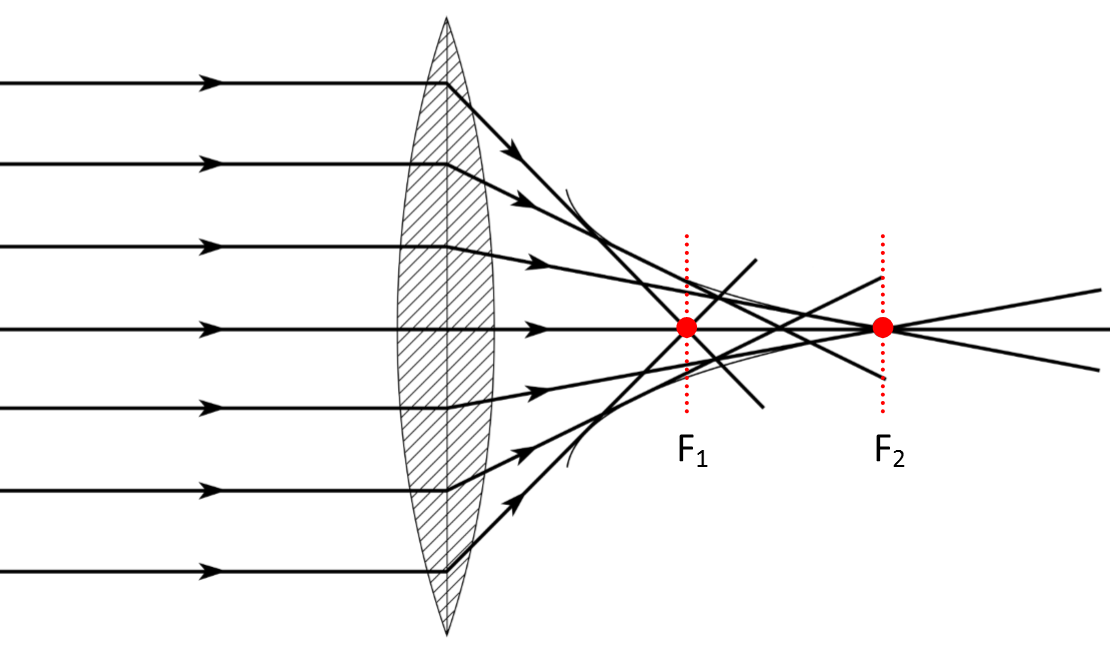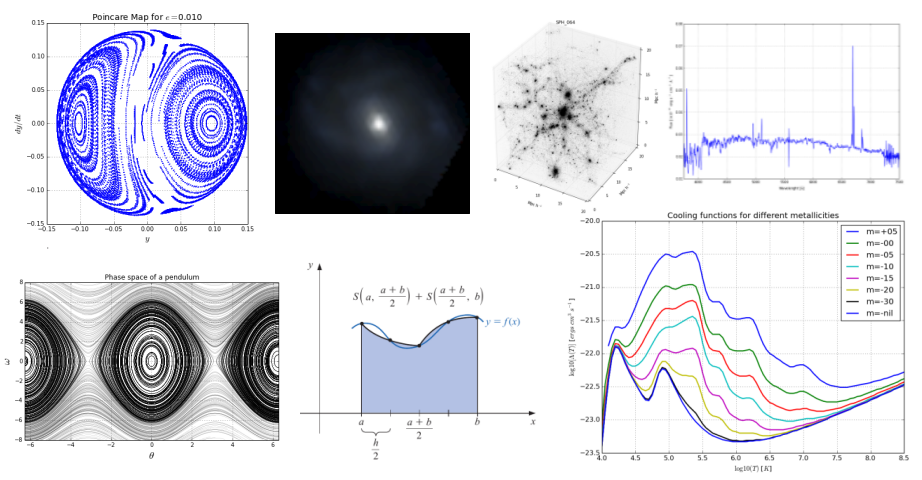Table of Contents
- The general idea
- How these scripts work?
The general idea
The general idea behind ensemble learning is that instead of a specific algorithm for classification, we have a meta classifier that takes advantage of couple of classic classifier. In this project we have these 4:
- Adaboosted decision trees
- Random forrest
- Bagged MLPs
- Some sort of bootstraping + Soft voting
It’s worth mentioning that every hard coded parameter is retrieved from previous projects and tests.
How these scripts work?
Loading data
Needed modules and global variables
from os.path import exists, join
import numpy as np
seprator = "\t"
dataset_folder = "lfw"
train_file = "pairsDevTrain.txt"
test_file = "pairsDevTest.txt"
Parsing the arrays in dataset
def parse_array(stringed_array):
#parse the stringed array
#return the array
result = []
for string in stringed_array:
if "[" in string:
string = string[2:]
if "]" in string:
string = string[:-2]
for token in string.split():
result.append(float(token))
return np.array(result)
Extracting arrays for parsing
We need to figure out path to each txt file in dataset in order to load them as a string and then parse them and load them into memory using previous function.
def extract_array_from_line(path, line):
#Name _ Pic.No1 _ Pic.No2
#extract array from Pics and return them
try:
name, pic1, pic2 = line.split(seprator)
pic1 = int(pic1)
pic2 = int(pic2)
pic1 = f'{name}_{pic1:04d}.txt'
pic2 = f'{name}_{pic2:04d}.txt'
final_path = join(path, name)
final_pic1 = join(final_path, pic1)
final_pic2 = join(final_path, pic2)
parsed_pic1 = open(final_pic1, 'r').readlines()
parsed_pic2 = open(final_pic2, 'r').readlines()
parsed_pic1 = parse_array(parsed_pic1)
parsed_pic2 = parse_array(parsed_pic2)
return np.array([parsed_pic1, parsed_pic2])
except Exception:
name1, pic1, name2, pic2 = line.split(seprator)
pic1 = int(pic1)
pic2 = int(pic2)
pic1 = f'{name1}_{pic1:04d}.txt'
pic2 = f'{name2}_{pic2:04d}.txt'
final_path1 = join(path, name1)
final_path2 = join(path, name2)
final_pic1 = join(final_path1, pic1)
final_pic2 = join(final_path2, pic2)
parsed_pic1 = open(final_pic1, 'r').readlines()
parsed_pic2 = open(final_pic2, 'r').readlines()
parsed_pic1 = parse_array(parsed_pic1)
parsed_pic2 = parse_array(parsed_pic2)
return np.array([parsed_pic1, parsed_pic2])
Loading the dataset
Now we use all the functions above to load our dataset.
def load(path):
#check if the file exists
# if not, return None
# if yes, load the data
# return the data
if not exists(path):
return None
data_path = join(path, dataset_folder)
train_path = join(path, train_file)
test_path = join(path, test_file)
train_data_plus = []
test_data_plus = []
train_data_negative = []
test_data_negative = []
train_path_handle = open(train_path, 'r')
test_path_handle = open(test_path, 'r')
for i, line in enumerate(train_path_handle.readlines()):
if i == 0:
count = int(line)
continue
if i <= count:
train_data_plus.append(extract_array_from_line(data_path, line))
else:
train_data_negative.append(extract_array_from_line(data_path, line))
for i, line in enumerate(test_path_handle.readlines()):
if i == 0:
count = int(line)
continue
if i <= count:
test_data_plus.append(extract_array_from_line(data_path, line))
else:
test_data_negative.append(extract_array_from_line(data_path, line))
return np.array(train_data_plus), np.array(train_data_negative), np.array(test_data_plus), np.array(test_data_negative)
Adaboosted Decision Trees
Sklearn’s implementation of all meta classifiers is used in this project.
Needed modules and global variables
from sklearn.ensemble import AdaBoostClassifier
from sklearn.tree import DecisionTreeClassifier
from sklearn.metrics import accuracy_score
train_data = None
train_label = None
test_data = None
test_label = None
Initializing global variables
The way I’ve modeled the data for this meta classifier, forms a vector from concatenating vector of each image, In other words imagine we have extracted parts of people’s DNA and we want to know whether they are related or not, First we form a table containing DNA parts of each of those people’s DNA in each row and we want our decision tree to figure out existence of any blood relationship. We are doing the samething here, each vector being image’s DNA and their concatenation being each row. We transform the data into our desired shape and then use this function to load them.
def init_vars(_train_data, _train_label, _test_data, _test_label):
#Initializez global variables
global train_data
global train_label
global test_data
global test_label
train_data = _train_data
train_label = _train_label
test_data = _test_data
test_label = _test_label
Initializing the meta classifier
First we need to construct a decision tree classifier with our desired parameters and then passing that to our meta classifier and at the end train the meta classifier and the measure its performance. That’s what we do for all of meta classifiers in this project.
def get_populated_dtc(max_depth=8, min_samples_split=2, min_samples_leaf=4, min_impurity_decrease=0.0):
#Return a DecisionTreeClassifier object
dtc = DecisionTreeClassifier(max_depth=max_depth, min_samples_split=min_samples_split, min_samples_leaf=min_samples_leaf, min_impurity_decrease=min_impurity_decrease)
return dtc
def adaboosted_dt():
ab_dt = AdaBoostClassifier(
get_populated_dtc(), n_estimators=100
)
return ab_dt.fit(train_data, train_label)
def test_accuracy(trained_model):
test1 = accuracy_score(test_label, trained_model.predict(test_data))
train1 = accuracy_score(train_label, trained_model.predict(train_data))
return test1, train1
I’ll talk about its results and performance at the end of this document.
Random Forrest
Needed modules and global variables
from sklearn.ensemble import RandomForestClassifier
from sklearn.metrics import accuracy_score
import numpy as np
train_data = None
train_label = None
test_data = None
test_label = None
Initializing global variables
Here I’ve experimented with a different way of modeling data, I’ve imagined that each vector is not just an array of features but it actually represents and actual vector in a 512 dimension and their differences and their distance can mean something, So this time I create a vector of size 513 which its first 512 elements are absolute value of two vectors and its last element is their distance.
def preprocess_data(d):
#Calculate vector distance and absolute value of their difference
res1 = []
res2 = []
for data in d:
res = np.subtract(data[0], data[1])
res1.append(np.abs(res))
res2.append(np.linalg.norm(res))
res = [np.append(x, y) for x, y in zip(res1, res2)]
return np.array(res)
def init_vars(_train_data, _train_label, _test_data, _test_label):
#Initializez global variables
global train_data
global train_label
global test_data
global test_label
train_data = _train_data.reshape(len(_train_data), 2, -1)
train_label = _train_label
test_data = _test_data.reshape(len(_test_data), 2, -1)
test_label = _test_label
train_data = preprocess_data(train_data)
test_data = preprocess_data(test_data)
Initializing the meta classifier
def test_accuracy(trained_model):
test1 = accuracy_score(test_label, trained_model.predict(test_data))
train1 = accuracy_score(train_label, trained_model.predict(train_data))
return test1, train1
def handle_random_forrest():
rfc = RandomForestClassifier(max_depth=8, min_samples_split=2, min_samples_leaf=4, min_impurity_decrease=0.0)
return rfc.fit(train_data, train_label)
Bagged MLPs
Needed modules and global variables
from sklearn.ensemble import BaggingClassifier
from sklearn.neural_network import MLPClassifier
from sklearn.metrics import accuracy_score, adjusted_rand_score
train_data = None
train_label = None
test_data = None
test_label = None
Initializing global variables
Here I’ve used the same modeling as what I used in Adaboosted Decision Trees.
def init_vars(_train_data, _train_label, _test_data, _test_label):
#Initializez global variables
global train_data
global train_label
global test_data
global test_label
train_data = _train_data
train_label = _train_label
test_data = _test_data
test_label = _test_label
Initializing the meta classifier
def get_populated_mlpc():
#Return a MLPClassifier object
mlpc = MLPClassifier()
mlpc.set_params(hidden_layer_sizes=(200, 80, 20), alpha=0.032, random_state=1, solver="adam", activation="relu", max_iter=500)
return mlpc
def bagged_mlp():
bg_mlpc = BaggingClassifier(base_estimator= get_populated_mlpc(), n_estimators=20, random_state=1, n_jobs=12)
return bg_mlpc.fit(train_data, train_label)
def test_accuracy(trained_model):
test1 = accuracy_score(test_label, trained_model.predict(test_data))
train1 = accuracy_score(train_label, trained_model.predict(train_data))
return test1, train1
Some sort of bootstraping + Soft voting
Here I’ve taken advantage of three different classifiers:
- SVM
- MLP
- DT
I loop over them and in each iteration train them on a random subset of dataset and modify an array of weights based on their performance and at the very end I pass them to a VotingClassifier and train that meta classifier on the whole dataset.
Needed modules and global variables
from sklearn.neural_network import MLPClassifier
from sklearn.tree import DecisionTreeClassifier
from sklearn.svm import SVC
from sklearn.ensemble import VotingClassifier
from sklearn.metrics import accuracy_score
import numpy as np
train_data = None
train_label = None
test_data = None
test_label = None
Initializing global variables
Here I’ve used same modeling as RandomForrest.
def preprocess_data(d):
#Calculate vector distance and absolute value of their difference
res1 = []
res2 = []
for data in d:
res = np.subtract(data[0], data[1])
res1.append(np.abs(res))
res2.append(np.linalg.norm(res))
res = [np.append(x, y) for x, y in zip(res1, res2)]
return np.array(res)
def init_vars(_train_data, _train_label, _test_data, _test_label):
#Initializez global variables
global train_data
global train_label
global test_data
global test_label
train_data = _train_data.reshape(len(_train_data), 2, -1)
train_label = _train_label
test_data = _test_data.reshape(len(_test_data), 2, -1)
test_label = _test_label
train_data = preprocess_data(train_data)
test_data = preprocess_data(test_data)
The pipeline
def get_random_samples(number_of_samples=3):
#Return a list of random samples from dataset
res = []
for _ in range(number_of_samples):
indexes = np.random.choice(len(train_data), size=(int(len(train_data) / number_of_samples)), replace=False)
res.append(indexes)
return res
def test_accuracy_pipeline(trained_model):
test1 = accuracy_score(test_label, trained_model.predict(test_data))
return test1
def test_accuracy(trained_model):
test1 = accuracy_score(test_label, trained_model.predict(test_data))
train1 = accuracy_score(train_label, trained_model.predict(train_data))
return test1, train1
def pipeline(debug=False):
svm = SVC(decision_function_shape="ovr", kernel="rbf", probability=True)
mlp = MLPClassifier(hidden_layer_sizes=(40, 30, 20, 30, 40), alpha=0.032, random_state=1, solver="adam", activation="relu", max_iter=500)
dt = DecisionTreeClassifier(max_depth=64, min_samples_split=2, min_samples_leaf=4, min_impurity_decrease=0.0)
weights = [1 / 3, 1 / 3, 1 / 3]
last_acc = [0, 0, 0]
for _ in range(10):
samples = get_random_samples()
svm.fit(train_data[samples[0]], train_label[samples[0]])
mlp.fit(train_data[samples[1]], train_label[samples[1]])
dt.fit(train_data[samples[2]], train_label[samples[2]])
svm_acc = test_accuracy_pipeline(svm)
mlp_acc = test_accuracy_pipeline(mlp)
dt_acc = test_accuracy_pipeline(dt)
if svm_acc < last_acc[0]:
weights[0] -= 0.05
elif mlp_acc < last_acc[1]:
weights[1] -= 0.05
elif dt_acc < last_acc[2]:
weights[2] -= 0.05
if svm_acc > last_acc[0]:
weights[0] += 0.05
elif mlp_acc > last_acc[1]:
weights[1] += 0.05
elif dt_acc > last_acc[2]:
weights[2] += 0.05
last_acc = [svm_acc, mlp_acc, dt_acc]
if debug:
print("**SVM: {}, MLP: {}, DT: {}**".format(svm_acc, mlp_acc, dt_acc))
svm_acc = svm_acc * weights[0]
mlp_acc = mlp_acc * weights[1]
dt_acc = dt_acc * weights[2]
if debug:
print("##SVM: {}, MLP: {}, DT: {}##".format(svm_acc, mlp_acc, dt_acc))
if svm_acc > mlp_acc and svm_acc > dt_acc:
weights[0] += 0.1
elif mlp_acc > svm_acc and mlp_acc > dt_acc:
weights[1] += 0.1
elif dt_acc > svm_acc and dt_acc > mlp_acc:
weights[2] += 0.1
vt_svm_mlp_dt = VotingClassifier(estimators=[
('svm', svm), ('mlp', mlp), ('dt', dt)],
voting='soft', weights=weights, n_jobs=12)
res = vt_svm_mlp_dt.fit(train_data, train_label)
if debug:
print("Final accuracy: {}".format(test_accuracy(res)[0]))
return res
The main script
Needed modules
import numpy as np
from utils.data_loader import load
import utils.ensemble_dt as edt
import utils.ensemble_bag_mlp as ebm
import utils.svm_mlp_dt_combo as smdt
import utils.ensemble_rf as erf
from sklearn import preprocessing
from tabulate import tabulate
Loading and manuplating the data
Here I transform loaded data into the form I explained in AdaBoostClassifier section.
train_plus, train_negative, test_plus, test_negative = load("/home/toorajtaraz/Downloads/project/")
train_data_count = train_plus.shape[0]
test_data_count = test_plus.shape[0]
train_plus = train_plus.reshape((train_data_count, -1))
train_negative = train_negative.reshape((train_data_count, -1))
test_plus = test_plus.reshape((test_data_count, -1))
test_negative = test_negative.reshape((test_data_count, -1))
train_data = []
train_label = []
test_data = []
test_label = []
for x in train_plus:
train_data.append(x)
train_label.append(1)
for x in train_negative:
train_data.append(x)
train_label.append(0)
for x in test_plus:
test_data.append(x)
test_label.append(1)
for x in test_negative:
test_data.append(x)
test_label.append(0)
test_data = np.array(test_data)
train_data = np.array(train_data)
test_label = np.array(test_label)
train_label = np.array(train_label)
Preprocessing data
Sklearn Library offers a module that takes care of standardizing the data, this action improves convergence time and accuracy (at least based on what I witnessed).
scaler = preprocessing.StandardScaler().fit(train_data)
train_data = scaler.transform(train_data)
scaler = preprocessing.StandardScaler().fit(test_data)
test_data = scaler.transform(test_data)
Using what have created so far
edt.init_vars(train_data, train_label, test_data, test_label)
adaboosted_dt_acc = edt.test_accuracy(edt.adaboosted_dt())
ebm.init_vars(train_data, train_label, test_data, test_label)
bagged_mlp_acc = ebm.test_accuracy(ebm.bagged_mlp())
smdt.init_vars(train_data, train_label, test_data, test_label)
svm_mlp_dt_combo_acc = smdt.test_accuracy(smdt.pipeline(debug=True))
erf.init_vars(train_data, train_label, test_data, test_label)
random_forrest_acc = erf.test_accuracy(erf.handle_random_forrest())
Results
Overall view
| TYPE | TEST_P | TRAIN_P |
| AdaboostedDecisionTree | 0.578 | 1 |
| BaggedMLP | 0.766 | 0.997273 |
| SVM_MLP_DT | 0.844 | 0.963636 |
| RandomForest | 0.81 | 0.985909 |
Detailed discussion
In case of AdaboostedDecisionTree, it performed as I excepted, very well on train dataset and poorly on test dataset due to over fitting. BaggedMLPs didn’t perform very well as excepted, just about 2000 data samples are not enough for training a MLP. At first I intended to extract data from dataset folder and train my model on a larger dataset, but I figured due to our point being related to the accuracy we achieve it wouldn’t be ethical :)) RandomForest and my customish algorithm performed better than the others. During my tests I concluded that SVM with RBF kernel performs the best and the ensemble final accuracy is really close to SVM’s accuracy, but I assume it wouldn’t be the case if we had a large enough dataset, in that case MLP would be the dominant model in voting.






